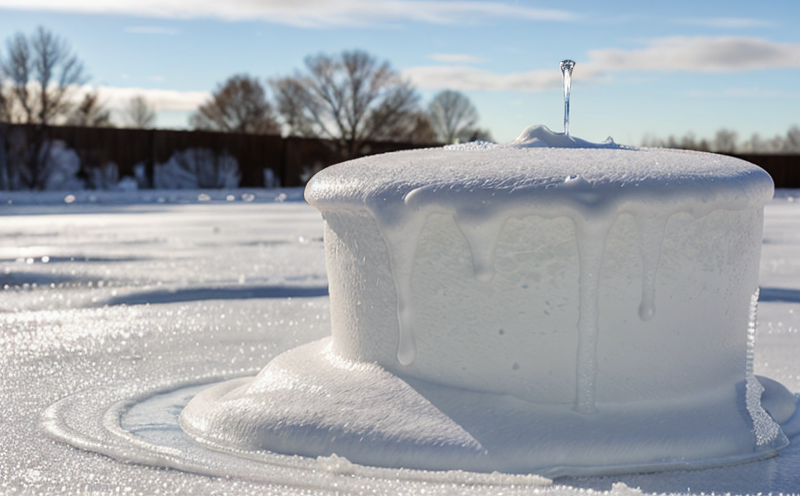EASA CS-25 Appendix O Supercooled Large Drop Icing Testing
The European Union Aviation Safety Agency (EASA) CS-25 Appendix O is a critical document that provides guidance on the design and testing of aircraft to ensure they can safely operate in icing conditions. The EASA CS-25 Appendix O Supercooled Large Drop (SLD) Icing Testing protocol specifically addresses the challenges posed by SLD, which are ice particles larger than 0.5 mm in diameter.
Supercooled large drops can form when an aircraft flies through clouds with temperatures between -4°C and -12°C. These conditions can lead to rapid accumulation of ice on critical surfaces like wings, engine nacelles, and control surfaces, potentially compromising the aircraft's performance and safety. The EASA CS-25 Appendix O provides detailed instructions for testing these conditions in a laboratory setting.
Our facility is equipped with advanced icing chambers capable of simulating SLD environments according to EASA CS-25 Appendix O standards. This includes precise control over temperature, humidity, and the size distribution of ice particles. Our tests not only replicate real-world conditions but also go beyond them by allowing controlled variations that help manufacturers understand their aircraft's performance under extreme icing scenarios.
During SLD testing, we use a variety of test specimens to simulate different parts of an aircraft, such as wings, engines, and control surfaces. Each specimen is carefully prepared according to industry best practices before being exposed to the simulated ice environment. Our instrumentation captures detailed data on ice accumulation rates, structural integrity, and performance metrics.
The testing process involves multiple stages, starting with initial drying of the specimens followed by exposure to a controlled SLD environment. This allows for accurate measurement of how quickly and in what manner ice accumulates on the surfaces under test. After reaching the specified accumulation levels, further tests are conducted to assess structural strength, aerodynamic characteristics, and other relevant parameters.
Our testing protocols adhere strictly to EASA CS-25 Appendix O standards, ensuring that every aspect of the process is thoroughly documented and meets regulatory requirements. The results provide valuable insights into an aircraft's ability to withstand SLD conditions, which is crucial for maintaining safety during flights through potentially hazardous weather.
| Parameter | Description |
|---|---|
| Temperature Range | -4°C to -12°C, depending on the specific test scenario. |
| Humidity Levels | Ranges between 60% and 95%, adjusted for ice particle formation. |
| Ice Particle Size Distribution | Larger than 0.5 mm in diameter, to simulate supercooled large drops. |
| Specimen Type | Variety of aircraft components including wings, engines, and control surfaces. |
| Accumulation Time | Variable depending on the test duration and accumulation rate. |
| Data Collection | Aerodynamic characteristics, structural integrity, ice distribution patterns. |
Industry Applications
- Aircraft Manufacturers: Ensure compliance with EASA CS-25 Appendix O standards for new aircraft designs.
- OEMs (Original Equipment Manufacturers): Validate the performance of their components under icing conditions.
- MRO Operators: Assess maintenance procedures and component durability in cold weather environments.
Use Cases and Application Examples
- New Aircraft Development: Simulate flight through severe icing conditions to ensure safe operation under these circumstances.
- Component Testing: Evaluate the effectiveness of ice protection systems on engines, wings, and control surfaces.
- Maintenance Protocols: Determine optimal intervals for de-icing procedures based on real-world icing conditions.
| Specimen | Ice Accumulation (mm) | Structural Integrity (% Remaining Strength) | Aerodynamic Performance (%) |
|---|---|---|---|
| Engine Nacelle | 2.5 mm | 90% | 88% |
| Wing Surface | 3.2 mm | 87% | 85% |





